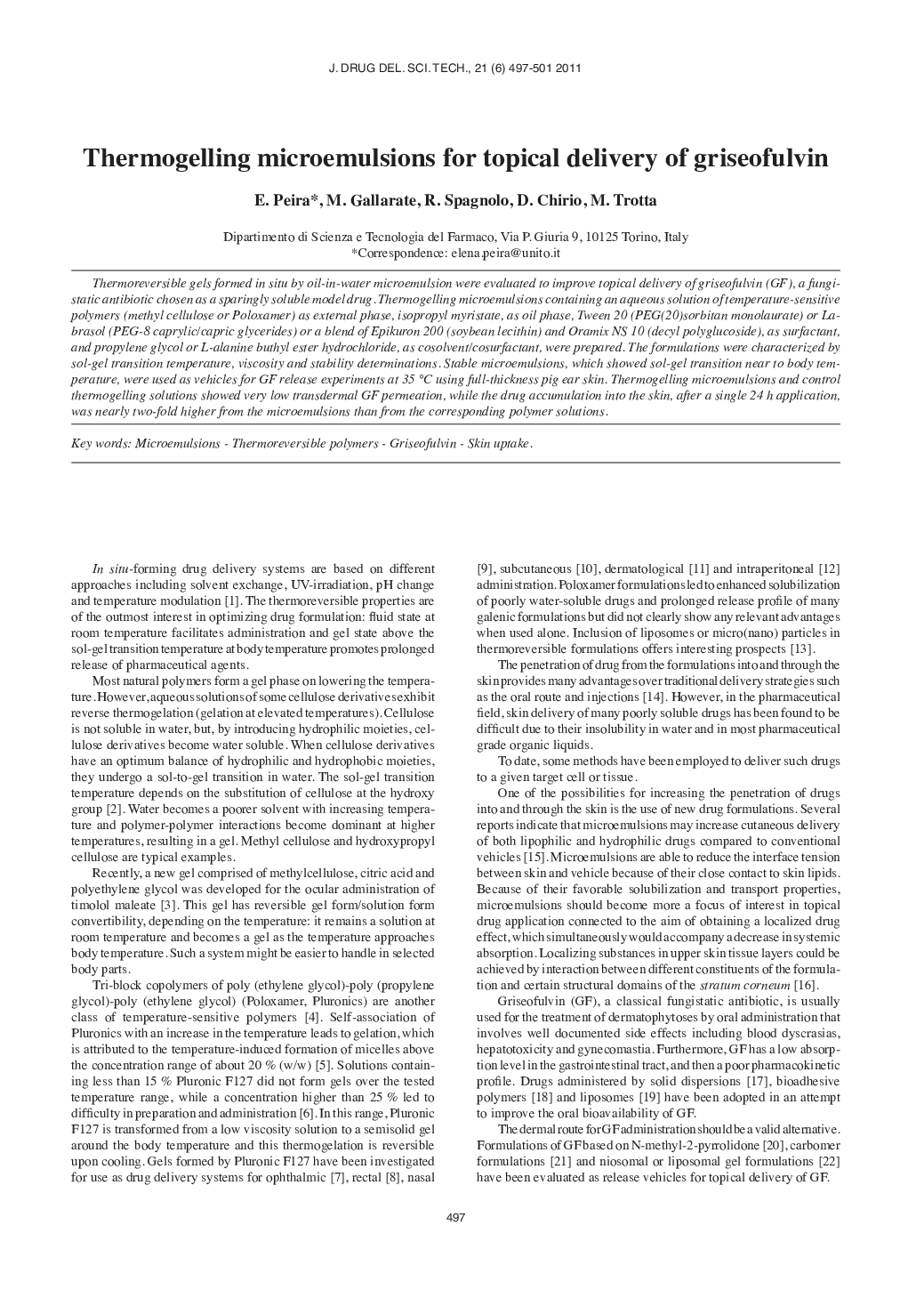| Article ID | Journal | Published Year | Pages | File Type |
|---|---|---|---|---|
| 2483564 | Journal of Drug Delivery Science and Technology | 2011 | 5 Pages |
Thermoreversible gels formed in situ by oil-in-water microemulsion were evaluated to improve topical delivery of griseofulvin (GF), a fungi-static antibiotic chosen as a sparingly soluble model drug. Thermogelling microemulsions containing an aqueous solution of temperature-sensitive polymers (methyl cellulose or Poloxamer) as external phase, isopropyl myristate, as oil phase, Tween 20 (PEG(20)sorbitan monolaurate) or Labrasol (PEG-8 caprylic/capric glycerides) or a blend of Epikuron 200 (soybean lecithin) and Oramix NS 10 (decyl polyglucoside), as surfactant, and propylene glycol or L-alanine buthyl ester hydrochloride, as cosolvent/cosurfactant, were prepared. The formulations were characterized by sol-gel transition temperature, viscosity and stability determinations. Stable microemulsions, which showed sol-gel transition near to body temperature, were used as vehicles for GF release experiments at 35 °C using full-thickness pig ear skin. Thermogelling microemulsions and control thermogelling solutions showed very low transdermal GF permeation, while the drug accumulation into the skin, after a single 24 h application, was nearly two-fold higher from the microemulsions than from the corresponding polymer solutions.
